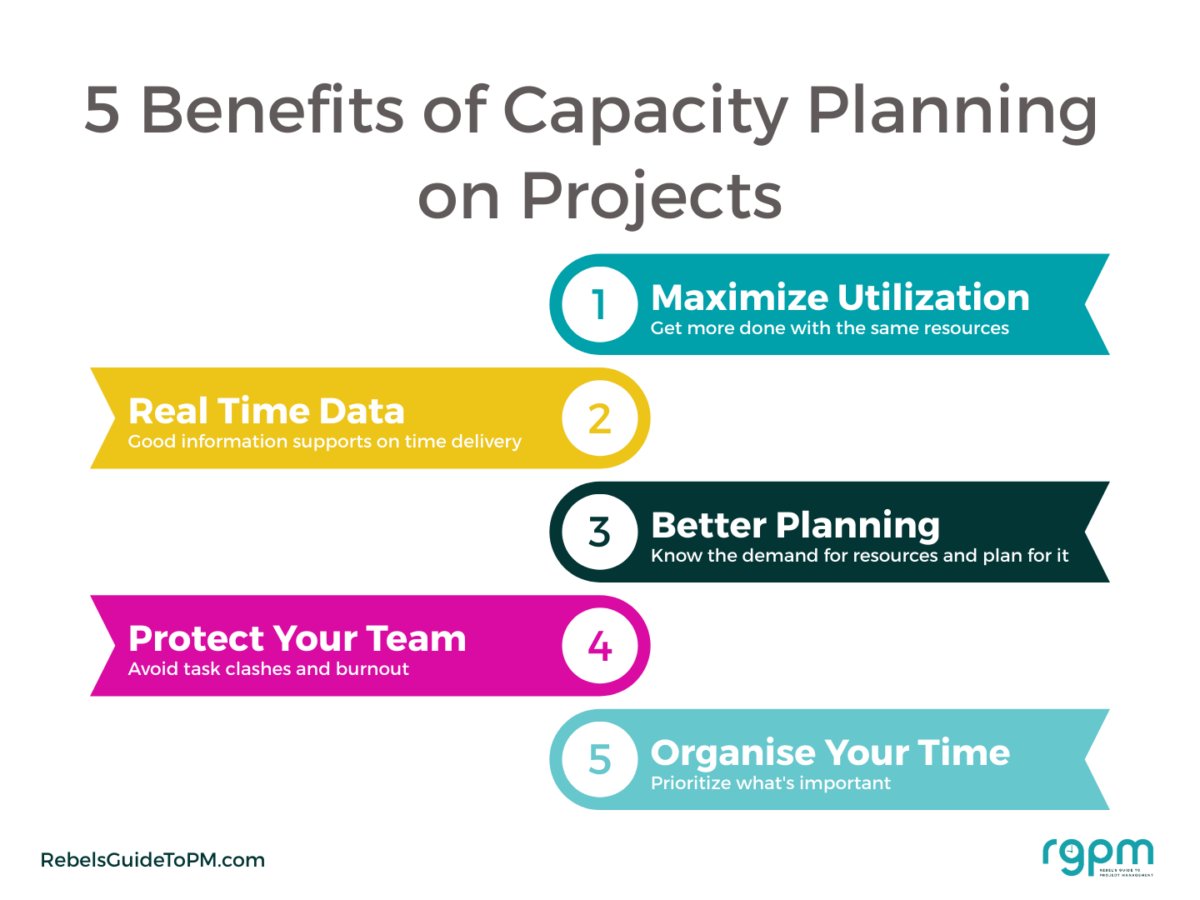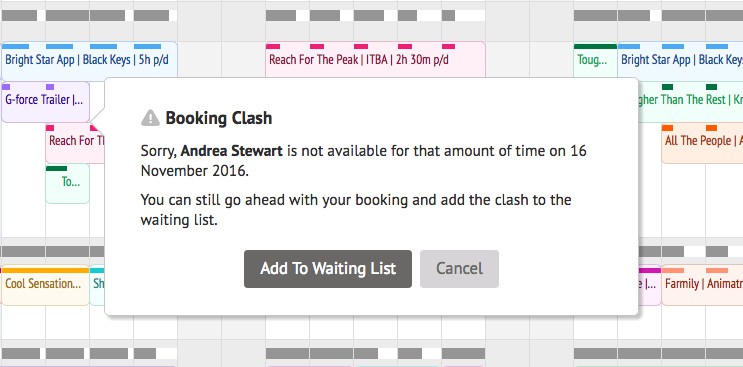Capacity Planning: The Secret to Successful Projects
Not that long ago, a project manager – who, for the purposes of this article has asked to remain anonymous – was planning out Phase 2 of her project.
There was a lot of work to do for the project management team, which was just her. No problem, she thought. A project coordinator, or an admin resource from the PMO would be the perfect extra pair of hands. I’ll ask, she said to herself.
So she did. Her manager offered her a resource. Great, she thought. But he wasn’t available for another three months. I need the help now, she said.
She met the PMO Manager and another manager whom she knew had staff keen to learn about project management. I don’t mind training someone, she said. Between them they came up with two other resources. We’ll check, said the managers.
So they did. And those resources were busy.
The problem was discussed at the next management team meeting. By now a month had passed. The project manager continued to work weekends and evenings to get through the work, because she cared about the project.
She produced a project plan and resource plan, and kept timesheets so she could justify why she was doing so many hours on this project. She sketched out what she wanted the extra resource to do.
Then she asked her manager for help again. I see what you’re asking, he said, and I fully support you. I’m sure you can work it out by yourself.
She was getting tired of begging for extra resource on a project that was supposedly important to the organization. She stopped asking. After another three months of ridiculous hours – and finding out that the “available in 3 months” resource had actually been assigned to another project after all – she quit.
Actually, that last bit hasn’t happened yet. When I spoke to her a few weeks ago, she was grumbling fearsomely but wasn’t at the quitting point. However, I’ve mentored and spoken to enough project managers under stress to know that is how things often end up.
The thing that struck me from our conversation was this comment:
“If we had a single resource pool it wouldn’t take 5 managers in a room to work out who was available to help, and then turn up nothing anyway.”
And that’s why capacity planning is important.
What Is Capacity Planning?
If your project plan and the payroll system had a baby, it would be capacity planning.
Here’s a brief definition:
Capacity planning is the junction of knowing the demand for resource (the project plans) and the supply (who is on the payroll).
I’m being flippant – there is a bit more to it than that, but in short capacity planning is a way of effectively and easily working out who is available at any time for project work.
It relies on having a single resource pool which you can use to track people, their skills and availability and other resources like rooms or equipment. In other words, it makes everything about project human resource management transparent.

Why aren’t timesheets and schedules enough?
Timesheets give you a historical view of what has happened on your project but they don’t add a whole lot of value for what’s coming up.
Your project schedule tells you what tasks are coming up, but often doesn’t link to anything that remotely tracks resource availability. In my experience, even when your project management software does have resource pool features like Microsoft Project, they feel complicated to set up and maintain.
Tool that makes project capacity planning easy, like Resource Guru, bridge the gap between your plan and the people working on it.
The importance of capacity planning
If you don’t already do capacity planning, here are 5 reasons why you’re going to wish you did.
Reason #1: You maximize utilization
You get more done with the same amount of people, increasing your chance of successful, on time, delivery.
You need strategies that work when everything is a priority, and being able to plan work to maximize utilization is certainly the starting point.
Andy Jordan, writing on ProjectManagement.com, shares an example of how an enterprise resource pool helped one company overcome their resource availability challenges. Just by taking a wider view of the resources available to projects, a company increased their project capacity for delivery by 11%.
That wasn’t by introducing new resources; it was simply through better visibility of who was free and therefore being able to maximize their utilization.
Andy writes:
When it comes to project resource management, many organizations take the path of least resistance – doing what is easy over what is effective.
Capacity management tools give you a view of how much time resources have available so you can see who’s free at a glance. This helps you make the most of the people you have – especially important if you work on billable hours.

Reason #2: You get real time data
You avoid the hassle of scheduling people and then finding out that they aren’t actually available to you after all, increasing your chance of on time delivery.
I’m a big fan of real time project-related data because I’ve spent too long working with systems that churn out “information” that is out of date by the time I need to use it.
I need to know now that Claire has just booked Friday off, not when I send her an email chasing her tasks on Friday morning and get her out of office response.
However, I’m aware that if you put rubbish into the system, you’ll get rubbish out. Any tool is only as good as the people using it, so alongside capacity planning software you’ll need a cultural and behavioral shift to get people to accurately record their time.
Reason #3: You can plan better
When you plan better, around people’s availability, you don’t have people sitting around waiting for work. You can crash or fast track your schedule more effectively. Again, increasing your chance of an on time delivery.
Project managers spend a lot of time planning – it’s what we do. We’re also pretty good at shifting things around because someone else’s project takes priority and we lose a key resource, or because of any other strategic requirement.
As a team manager or business owner, being able to plan better means more accurate forecasting for your resources. That means I can tell my team with confidence that they’ve got enough work to do for the next year. In a different environment, you could be having a very different conversation with your team members.
Either way, knowing the demand means you can plan for it.
Reason #4: You can protect your team
Decent capacity planning helps you avoid burnout in your project team, increasing the likelihood of positive team morale and making it more likely that your project will be delivered successfully.
The project manager I talked about earlier on wasn’t being protected by her manager. She was over-allocated. Clever capacity planning tools would have flagged that to someone way before it became a problem.
In Resource Guru, you won’t need to worry about clashes. If you try to over-book someone you’ll have the option to add the work to their waiting list. I’m not sure that I like the idea of a waiting list for all my jobs. One look at that and I’d start losing sleep… But the concept of setting availability at an individual level so that you can’t overload someone is definitely a good thing.

Reason #5: Capacity planning helps people organize their time
You want people to feel that being part of your project team is a low stress job — at least, low stress related to the WAY they work, if not the actual work they are doing!
Organized individuals stay on top of their workload, increasing your chance of an on time delivery. Did you spot the theme?
I am more productive when I know exactly what I should be working on. I’ve written before about how I use a sticky note to highlight my top 3 priorities to prepare for the coming week.
I know I’m not alone in that. Planning out time for your resources means they see what they’ve got on their To Do list. They don’t have to wait for an email and you don’t have to leave to chance that they know what’s important for the project.
Capacity planning takes the stress out of finding resources for your project – or at least, it highlights issues so you can deal with them rather than wondering if you are going to have an issue or not.
